No products in the cart.
Lympha Press® for Clinicians
Lympha Press2023-10-16T16:23:43-04:00
Home > Clinicians
Clinicians
Lympha Press® is designed to keep therapy moving forward.
Your patients are dealing with chronic conditions that require ongoing management.
What motivates them to keep going? Results.
And results are directly related to adhering to the protocol you’ve prescribed.
Our patients love using their Lympha Press.
For over forty years, Lympha Press dynamic compression therapy systems have helped patients all over the world deal with lymphedema, chronic venous insufficiency, wounds, and lipedema. We’re the number one global brand in pneumatic compression for many reasons, including proven clinical evidence in over thirty peer-reviewed publications.
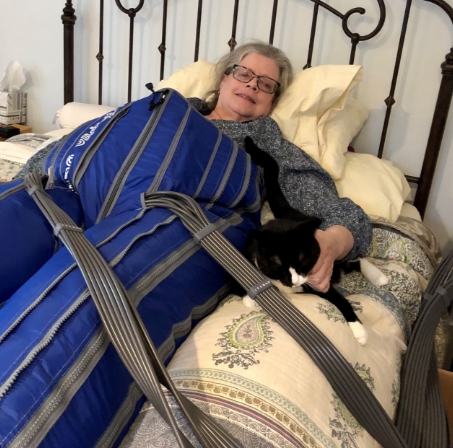
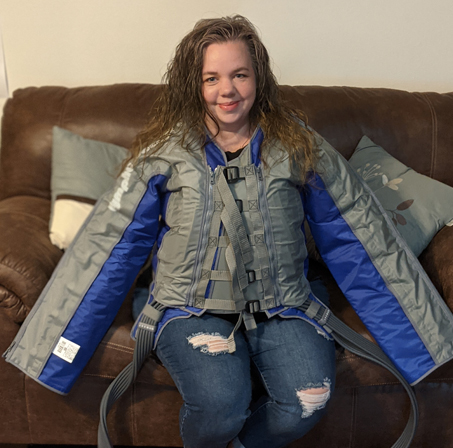
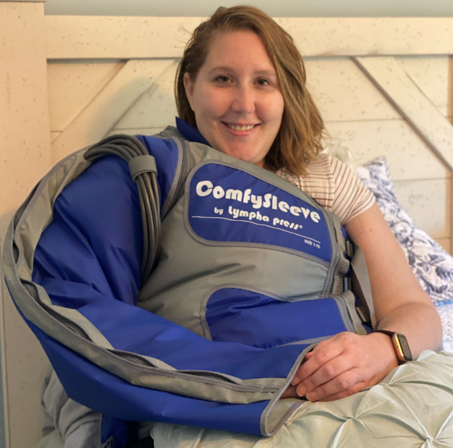
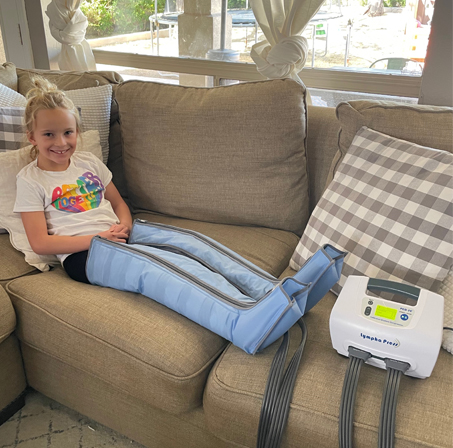
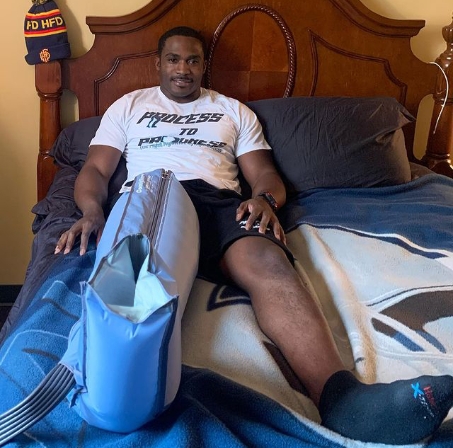




Video Player
Media error: Format(s) not supported or source(s) not found
Download File: https://www.lymphapress.com/wp-content/uploads/2021/12/LP_Products_ComfySleeve_1920x1080.mp4?_=1Why is Lympha Press so effective?
It’s a perfect combination of therapy that works for your patients’ conditions and their lifestyles. Our pneumatic compression systems incorporate advanced technology and are designed for ease-of-use, which contributes to high adherence rates and excellent outcomes.
We count on your patients improving. That’s why our advanced programming capabilities enable customization and flexibility. In other words, Lympha Press therapy adapts to your patients’ progress.
Not all pneumatic compression is the same.
Lympha Press is different, offering:
- Overlapping chambers in garments, reducing backflow or gaps
- Quick Cycle Time for comfort as well as more therapy in less time
- Therapy options such as Pretherapy™, Post-Therapy, and both Sequential and Peristaltic (“Wave”) cycles
- Easy donning and doffing of garments
- Easy-to-clean material

Here’s what you can expect from Lympha Press.
Our team is committed to helping your patients achieve the best possible outcomes.

One of our nationwide compression therapy consultants will help you determine the best product for your patient’s condition.

Our team of experts in private insurance and Medicare coverage will work directly with insurance carriers.

Once received, your patient will receive thorough instructions on how to use their Lympha Press or ArtAssist therapy. We’ll walk them through a full therapy session and answer any questions they might have. Our representatives always provide their contact information for assistance needed after delivery.
Our support doesn’t end after delivery.
We’ll provide updates on your patients’ progress and invite them to participate in our online Patient Roundtables, encouraging them to adhere to the protocols you’ve prescribed.
Just as we want patients to find it easy to use their Lympha Press, we also want to make it easy (and a pleasure) to work with our team. Consider using DocuSign to handle paperwork electronically or let us know your preferred method of communication. You can be confident that we’ll keep you and your patients apprised of the status of your Lympha Press order.
Want to see how Lympha Press works in person?
Always Learning. Always Growing.
It’s invigorating to be exposed to new research, and leading-edge information is regularly presented through the Lympha Press Educational Webinar Series.
Each month, we host thought leaders who share their insights and discoveries. Attendees at our live events can ask questions and get answers to help grow their knowledge base. Even if you can’t attend the webinar, we still invite you to register so we can send you the replay to watch at your convenience.
Have an idea for a topic that deserves more attention? Let us know.
Watch past webinars
November 2024 Research Roundtable: Caring for Veterans with Lymphedema and Peripheral Arterial Disease
A Conversation with Dr. John Chuback on Your Heart: The Center of Your Cardiovascular and Lymphatic Circulations
Unlocking the Brain’s Lymphatic System: The Next Frontier in Supermicrosurgery with Dr. Wei F. Chen
Caring for Lymphedema Patients in a Home Health Setting with Kris Nesheim and Karen Ashforth
Identification of Lymphatic Activators in Anti-Aging Research with Dr. Epameinondas Gousopoulos
Lifestyle & Lymphedema: Impacts of Nutrition, Exercise, Sleep, and Stress with Leslyn Keith and Robert Erkstam
Surgical and Percutaneous Decompression of Thoracic Duct-Venous Junction: One Location, Multiple Disease Processes with Megan Asher
A New Theory: Lipedema is Caused by Subclinical Compartment Syndrome with Dr. Karen Herbst
Improving Outcomes Before Lymphatic Surgery with Decongestive Therapy and Intermittent Pneumatic Compression with Dr. Corrado Campisi and Elena Parodi
What Lies Beneath the Skin Surface: Discoveries with Infrared Thermography with Frank Aviles, Jr.
Myths Debunked! How Lymphatic Imaging is Changing Patient Treatment Plans with Drs. Caroline Fife and Eva Sevick
Adverse Childhood Experiences (ACEs), Toxic Stress, and Chronic Disease with Kathleen Lisson
Pediatric Lymphedema: Cases, Bandaging, and Imaging Review with Dr. Caroline Fife and Missy Baylor
How Mast Cell Activation Syndrome, Mitochondrial Dysfunction, and the Brain Impact Your Patients with Linda-Anne Kahn
Lipedema Landmines: How MCAS, hEDS, and POTS Show Up and Affect Lipedema Treatment with Karen Ashforth
Considerations for Lymphatic Treatment with Orthopedic Injuries and After Surgery with Lesli Bell, PT, DPT, CLT-LANA
The Glycocalyx and L-O-V-E (Lymphedema of Venous Etiology) with Drs. Mark Melin and Heather Hettrick
Why Do Some of My Patients Never Fully Get Better? The Importance of Connective Tissue and Dysautonomia Syndromes in Lymphedema and Lipedema Treatment with Karen Ashforth, MS, OTR/L, CLT-LANA
Frequently Asked Questions
About Lympha Press
Any patient could potentially benefit, but especially patients who cannot completely control their swelling using their home program.
Lipedema and lipo-lymphedema patients find Lympha Press to be particularly useful for managing pain, mobility, and swelling. The Lympha Press Optimal Plus was specifically designed for lipedema patients and is proven to reduce pain and easy bruising, as well as swelling.
Lympha Press increases venous circulation and lymph vessel flow. This helps decongest and reduce edema, reduce pain, and control the symptoms of lymphedema. For patients with venous stasis ulcers, Lympha Press can shorten the time it takes for ulcers to heal and prevent recurrence of the ulcers after healing.
Yes. There are a number of studies that have proved Lympha Press assists in moving all the components of lymphatic fluid, including proteins.
Selecting Treatment Settings and Appliances
Treatment with Lympha Press can help to soften, remodel, and prevent fibrosis; higher pressures are generally used for this function. See the treatment protocol brochure for recommendations.
Leg sleeve appliances are most appropriate for patients with swelling that is limited to the feet and lower legs, such as found in phlebolymphedema. The Lympha Pants® are designed to treat the abdomen, genitals, buttocks, and inguinal areas in addition to the feet and legs, and are most appropriate for patients who have swelling or lymphatic damage in proximal areas as well as in the feet and legs.
The Lympha Pants® appliance with chambers that inflate over the genital area is part of effective home treatment for genital lymphedema.
Studies have shown that pneumatic compression therapy accelerates wound healing and prevent future wound recurrence. Wounds should be covered with occlusive dressing before treatment. The use of a barrier such as a plastic bag might be required in clinic over draining wounds. It is important to adjust pressure to comfort.
The time of day usually is determined by the individual patient’s schedule and need. Many patients with leg swelling tend to use Lympha Press in the afternoon and evening when legs are most swollen to relieve congestion.
Clinic/Home Use
Lympha Press pumps and appliances are very easy for patients to use. The pumps are easily operated by the touch of a button and automatically turn off at the end of the treatment. Appliances have zippers and donning straps that allow easy donning and doffing. Lympha Press pumps have special technology that senses the amount of inflation needed for the appliance to fit to the patient’s body, so the appliance does not have to be snugly fastened in order for the patient to receive the proper amount of pressure during treatment. Torso garments are modular one-piece systems that do not require assembly to don.
Lympha Press is often used in the clinic to assist with the reduction process, and as a trial in the clinic to determine appropriateness and proper settings for home use. Using Lympha Press expands the clinic treatment because a variety of other treatments can be done concurrently with Lympha Press treatment, such as self-care and risk reduction education, and focused MLD to other body areas.
Patients can become familiar with how to don and doff appliances and operate their Lympha Press in the clinic. This also gives the therapist the opportunity to assess needs for pressure tolerances, positioning, and modified techniques or adaptive equipment for donning and doffing appliances.
Education is an important factor for adherence. Patients who are encouraged to use Lympha Press have seen the benefits and incorporate it into their daily routine. Education in techniques for their home program and individualized modifications can help them succeed.